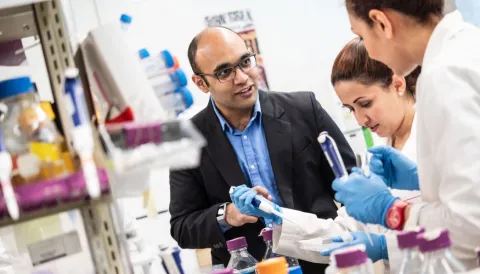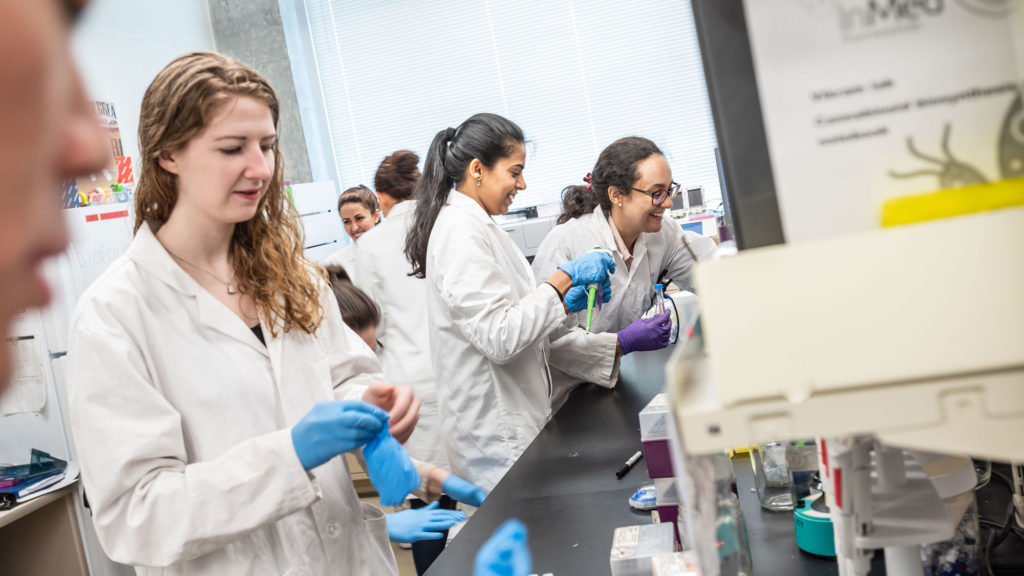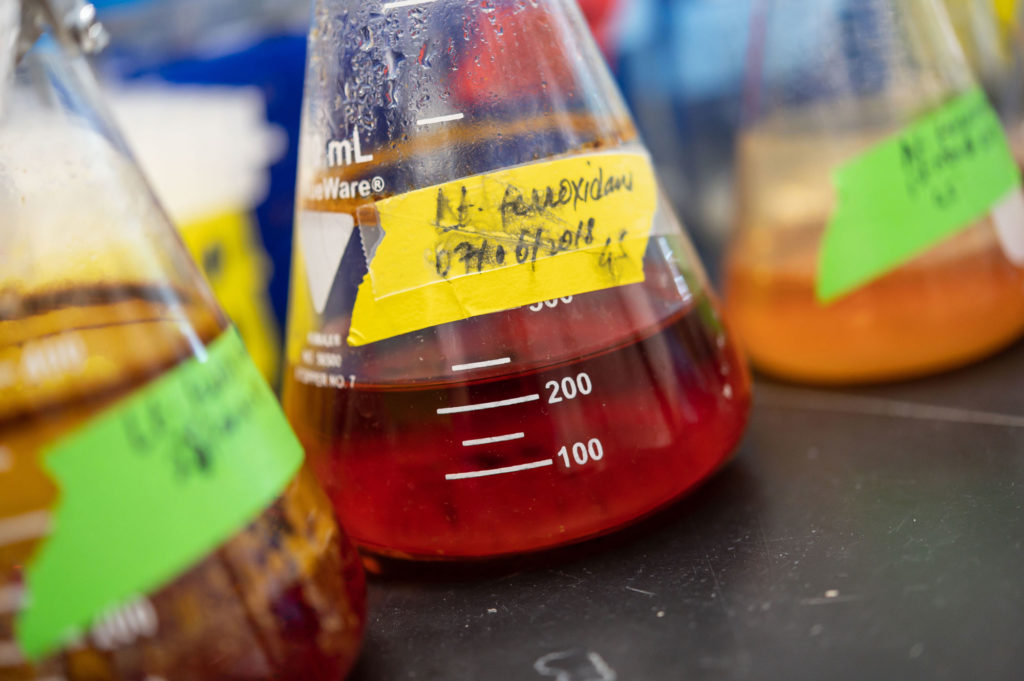Big problems, tiny solutions

UBC’s Vikram Yadav puts microbes to work to tackle some of society’s most daunting challenges
Apr 29, 2019 | For more information, contact Lou Corpuz-Bosshart
Vikram Yadav, a chemical engineering assistant professor who joined UBC’s faculty of applied science four years ago, is using some of the world’s tiniest creatures — yeasts and bacteria — to find solutions for some weighty problems.
Last year, his team developed a unique eye drop that uses a cannabinoid compound produced by microbes to treat glaucoma. The drops help shield the optic nerve from pressure that, left untreated, can progress to glaucoma, the number one cause of irreversible blindness in the world.
Yadav has also designed a solar cell powered by the common E. coli bacteria. In a master stroke of genetic engineering, he and his team found that the bug could be tweaked to squirt copious amounts of an energy-producing dye. The result is a solar cell capable of producing significantly more energy than any other biological solar cells on the market.
Now Yadav is setting his sights on one of the toughest environmental dilemmas in Canada’s resource industry: cleaning up oil sands tailings ponds that hold millions of litres of contaminated water produced by bitumen mining.
“Imagine these deep, manmade lakes, spanning hundreds of square kilometers and full of silt, sand, bitumen, trace metals and chemicals,” says Yadav. “You can filter out the solids, but there’s currently no good solution for removing the toxins — particularly naphthenic acids, a family of chemicals that is especially toxic.”
Yadav and his team zeroed in on these toxins and approached the problem by looking for bacterial strains that grow in polluted environments. They put various samples taken from oil sands tailings ponds under the microscope and eventually found one species that thrived in this type of environment by eating naphthenic acids. Further analysis pointed to at least six strains of the microbe that were unusually good at the task.
“Just as you can engineer bugs to manufacture materials, you can also engineer them to break things down,” said Yadav. “It was simply a matter of finding the strains that were the most efficient at removing the toxin, and then modifying them to work at a faster rate.”
Once most of the naphthenic acids are broken down and all of the other contaminants have been removed, the water can be recovered and discharged into the environment.
“Over time, nature will do the rest and the pond can be reclaimed, possibly becoming a habitat for wildlife in the region,” he added.
The six strains still need to be vetted in the field. Yadav’s team is working with an industrial partner to set up a pilot test in the Athabasca oil sands, home to 19 tailings ponds, sometime this year.
Yadav, who was born in Kitchener, Ontario and grew up in Mumbai, is a University of Waterloo alumnus who completed his PhD and postdoctoral studies at MIT and Harvard, respectively. He can talk about research-based solutions for social problems like glaucoma or the oil sands for hours, but he’s also constantly looking for ways to bring research to market and to day-to-day life.
Part of it could be family example — his parents are both chemical engineers, and his mother runs a successful company that manufactures pharmaceutical chemicals out of Mumbai. But mostly, it comes out of an inner drive to combine intellectual curiosity and social relevance.
“I keep telling my students that novel technology is very important, but we should also consider if we can make something out of those new ideas. Is there a realistic product down the line?” he asks.

Vikram Yadav and his students.

Students in the laboratory.

As part of this, he encourages his students to explore industry partnerships or commercial endeavors. Parisa Chegounian, one of his PhD students who worked on the naphthenic acid-eating bugs, is a part of a startup company co-founded by Yadav and private investors to commercialize the project. Her role focuses on translating the laboratory results for the industrial partners.
“I’m passionate about the environment, society and the economy, and these passions fuel my ambitions to become an ‘ecopreneur’ in the future,” said Chegounian, a chemical engineer who recently won an NSERC postgraduate scholarship to pursue her research. “I view tailing ponds as an opportunity rather than a problem — treating them can save water and other valuable resources, create green jobs and affirm our commitment to the environment.”
Yadav was recognized last year by the Canadian Society for Chemical Engineering as one of its four emerging leaders in chemical engineering. Ultimately, one of his dreams is to see B.C. established as a hub for this type of research and applications.
“We have the talent, the resources and the research programs to support a thriving biotechnology ecosystem right here. I urge more students to participate in this revolution that is brewing, pardon the pun, at UBC and in Vancouver. There is no greater joy than to develop and translate technologies that deliver economic, environmental and societal benefits,” says Yadav.